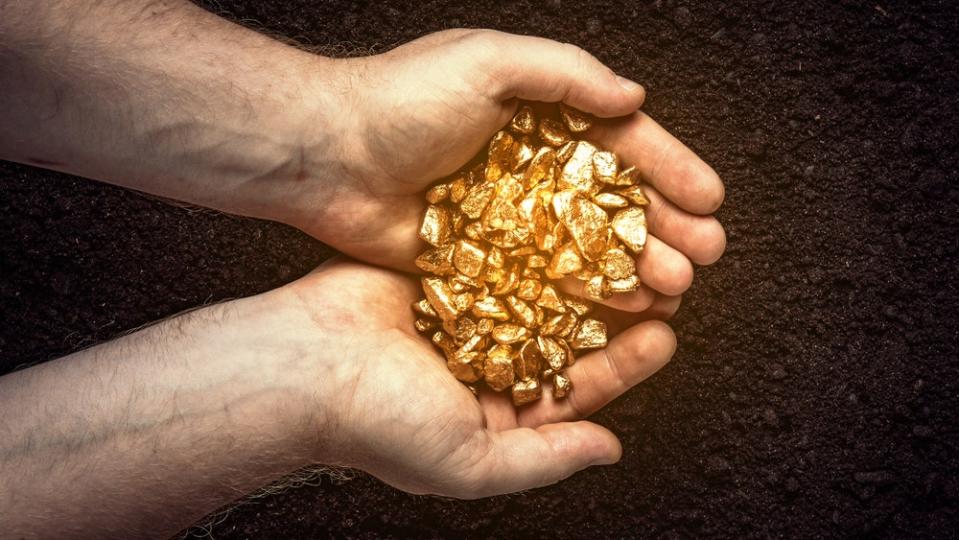Gold is traditionally considered an asset for older investors looking for security. Commercials feature old favorite actors like William Devane and highlight the security of owning gold. But while Warren Buffett once called gold “going long on fear,” the asset class has a new fan base: younger investors.
A recent survey from Bank of America Private Bank uncovered a surprising trend: younger investors want to own gold. The survey of 1,007 high-net-worth respondents in the U.S. with at least $3 million in investable assets found that 45% of younger investors own physical gold as an asset, and another 45% are interested in owning it. The study indicated a sharp divide between older and younger investors, with wealthy Americans overall seeing the greatest opportunity in U.S. stocks. In contrast, those ages 21-43 saw the greatest chances for wealth growth in real estate and crypto/digital assets.
Don’t Miss:
Can These New Highs Last?
Gold has hit new price highs recently, cruising over $2,400 as people look toward an asset that feels safe. When Costco started offering gold bars to its members, it ignited a frenzy. The company was doing a reported $100 to $200 million in gold sales earlier this year. Right now, demand is high, and those with gold may wonder if it is time to sell, while others who don’t own may wonder if there’s nothing but upside ahead.
Investors like gold because it doesn’t always correlate with the stock market. That means that if the stock market goes down, gold may not go with it. This is one reason people are also drawn to Bitcoin, although the correlation between Bitcoin and the stock market hasn’t been fully proven. A study from 2022 found that Bitcoin was vulnerable to stock market turmoil and other shocks like the COVID-19 pandemic.
Gold can provide a haven from political uncertainty and be used as a hedge against other investments, which is one reason hedge funds have been piling in lately. However, investors should know that it can go through periods where the price may not move much or decrease dramatically. In the past, gold has not outperformed the stock market for long periods, but there have been times, such as during the dot-com bust of the early 2000s when gold returns outpaced the stock market. From January 2001 to February 2011, gold was up over 320%. During this period, the S&P 500 barely moved, a period called the lost decade. As with every investment, how much you make depends on when you enter or exit.
All That Glitters May Not Pay Off Over Time
While gold may be appreciated, it doesn’t throw off any interest over time, so you don’t get any other benefits from owning physical gold. Having physical gold can also be cumbersome and inconvenient, not to mention a little unsafe. Some people opt for a gold ETF instead, such as the SPDR Gold Shares ETF (GLD), the largest physically backed gold exchange-traded fund in the world, to get access to gold without having to open up their own Fort Knox.
Another option for investors is to seek out some of the gold mining companies that pay a modest dividend. Newmont (NYSE:NEM) mines copper and gold worldwide. It has a 2.1% yield and an annual dividend of $1.00. Gold mining is an expensive business, and returns on these types of companies can be cyclical because of all sorts of operational concerns. Natural disasters, mine collapses, or geopolitical issues can all come along suddenly and temporarily shut down mining.
Trending: Commercial real estate has historically outperformed the stock market, but few investors have the capital or resources needed to invest in this asset class. This platform allows individuals to invest in commercial real estate.
If directly investing in mines feels too volatile, there are also companies like Royal Gold (NASDAQ:RGLD), a royalty company with two main income sources. The first is royalty interests, a percentage of revenue or metals produced from a mining project. The second is stream interest, the right to purchase metal from a mining project at a specified price. Gold royalty companies typically take on less risk compared to traditional mining companies. They do not bear the operational risks associated with mining, such as cost overruns, production shortfalls, or regulatory issues. Their income is tied to the performance of the mine but is less affected by operational challenges. Royal Gold has a forward dividend yield of 1.15% and an annual dividend of $1.60.
Investing in gold tends to go through cycles where it becomes more appealing. We are in one of those right now. However, studies like the Bank of America one mentioned above are interesting to watch. If younger investors see gold as a reliable asset class, that may keep prices steadier than they have been and give gold investors something to be excited about.
Check Out One Of Benzinga’s Top Picks for Private Market Opportunities Available Now:
Integris Secured Credit Fund IV
The fund provides a fixed annual return of 12%, payable quarterly, over a 2-year period starting April 2024 and ending April 2026. The note is secured by collateral with an estimated value of $71M, with an anticipated loan-to-value ratio of 14%.
View more private market offerings on Benzinga’s Alternative Investment screener.
© 2024 Benzinga.com. Benzinga does not provide investment advice. All rights reserved.
“ACTIVE INVESTORS’ SECRET WEAPON” Supercharge Your Stock Market Game with the #1 “news & everything else” trading tool: Benzinga Pro – Click here to start Your 14-Day Trial Now!
Get the latest stock analysis from Benzinga?
This article Is It Time For A Gold Rush? Younger Investors Pile In originally appeared on Benzinga.com
© 2024 Benzinga.com. Benzinga does not provide investment advice. All rights reserved.
Credit: Source link
